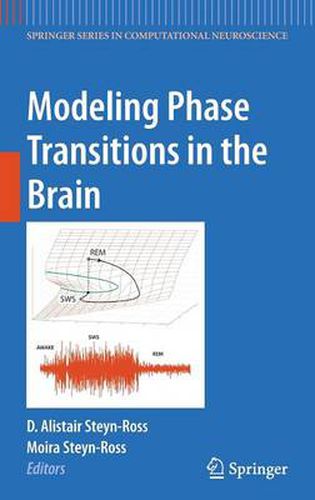Modeling Phase Transitions in the Brain

Modeling Phase Transitions in the Brain
This title is printed to order. This book may have been self-published. If so, we cannot guarantee the quality of the content. In the main most books will have gone through the editing process however some may not. We therefore suggest that you be aware of this before ordering this book. If in doubt check either the author or publisher’s details as we are unable to accept any returns unless they are faulty. Please contact us if you have any questions.
Foreword by Walter J. Freeman.
The induction of unconsciousness using anesthetic agents demonstrates that the cerebral cortex can operate in two very different behavioral modes: alert and responsive vs. unaware and quiescent. But the states of wakefulness and sleep are not single-neuron properties—they emerge as bulk properties of cooperating populations of neurons, with the switchover between states being similar to the physical change of phase observed when water freezes or ice melts. Some brain-state transitions, such as sleep cycling, anesthetic induction, epileptic seizure, are obvious and detected readily with a few EEG electrodes; others, such as the emergence of gamma rhythms during cognition, or the ultra-slow BOLD rhythms of relaxed free-association, are much more subtle. The unifying theme of this book is the notion that all of these bulk changes in brain behavior can be treated as phase transitions between distinct brain states.
Modeling Phase Transitions in the Brain contains chapter contributions from leading researchers who apply state-space methods, network models, and biophysically-motivated continuum approaches to investigate a range of neuroscientifically relevant problems that include analysis of nonstationary EEG time-series; network topologies that limit epileptic spreading; saddle–node bifurcations for anesthesia, sleep-cycling, and the wake–sleep switch; prediction of dynamical and noise-induced spatiotemporal instabilities underlying BOLD, alpha-, and gamma-band Hopf oscillations, gap-junction-moderated Turing structures, and Hopf-Turing interactions leading to cortical waves.
This item is not currently in-stock. It can be ordered online and is expected to ship in 7-14 days
Our stock data is updated periodically, and availability may change throughout the day for in-demand items. Please call the relevant shop for the most current stock information. Prices are subject to change without notice.
Sign in or become a Readings Member to add this title to a wishlist.


